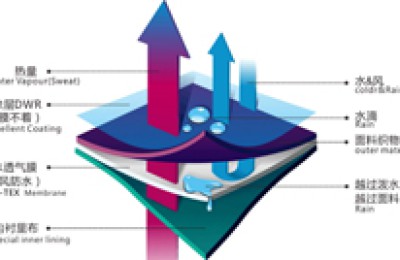Production efficiency is not as good as that of Chinese employees, and frequent strikes bring social unrest
“The manufacturing costs saved by moving from China (to Southeast Asia) cannot be maintained at all.” The US “Business Weekly” recently quoted manufacturers investing in Southeast Asian countries such as Vietnam and Cambodia as saying this. In recent years, many multinational companies have turned their attention to Southeast Asia, where wages are low, in order to save costs. However, the manufacturing industry in the region also has a worrying side: frequent safety accidents in factories in Bangladesh, demonstrations caused by workers in Cambodia demanding higher wages, and a new wave of political instability in Thailand, all pose challenges to international investors. . Recently, reporters visited manufacturing centers in Vietnam, Cambodia, Indonesia and other countries and found that manufacturing costs in these areas, especially labor costs, are also rising rapidly. Asian political and business circles and many scholars told reporters that people across Asia are demanding their own rights and want higher wages and better working conditions, so manufacturing costs cannot be viewed purely in terms of wage levels. The British “Financial Times” stated that for a long time, the Pearl River Delta and other Chinese regions will still be the “world’s factory”, but rising labor costs across Asia mean that China and Asia have provided cheap and high-quality goods to the world over the past 30 years. The model is over and the world needs to pay a fairer price for it in the future.
Visit the center of Cambodia’s garment industry
“We hope that both parties to the conflict can negotiate and resolve their differences peacefully. Stability is the common aspiration of many Cambodians,” Soapy told reporters. Sopi is a driver of a three-wheel motorcycle in Freedom Square in Phnom Penh, the capital of Cambodia. He witnessed the recent incident in which the police forcefully dispersed the demonstrators in the square. Since December 15 last year, Sam Rainsy, the leader of Cambodia’s largest opposition party, the CNRP, has launched “daily demonstrations”. Five trade union organizations with close ties to the opposition party have also launched a national workers’ strike, demanding that workers’ wages be reduced from the current approximately $100 is significantly increased to $160 per month. The strike gradually turned into violent conflicts in an industrial park on the outskirts of Phnom Penh. On January 3, some demonstrators stormed and damaged the factory and clashed with the police. The police then opened fire, killing four people. Sopi said that Cambodian people are indeed very dissatisfied with low income. “We all agree that the country needs reform, but violence is not the answer.”
When the reporter came to Cambodia recently, Phnom Penh’s urban area had returned to its former prosperity. People riding motorcycles and cars of various brands filled the roads in Phnom Penh. Tourist attractions and large supermarkets were still crowded with tourists. However, when the reporter set out from the city and drove for about an hour to the Wensheng Industrial Zone, which was hardest hit, he felt a completely different atmosphere. There are three larger industrial parks along both sides of Wensheng Road, including Jiahua Industrial Park, Anda Industrial Park, and Yukang Industrial Park. In addition to the hundreds of companies settled in these three industrial parks, there are also large and small garment factories built by other private companies. The total number is as many as 300, accounting for nearly 1/1 of the total number of garment factories in Cambodia. 3.
As soon as we entered Wensheng Road, the reporter felt the tense atmosphere here. There were dark burn marks, broken glass, stones on the ground, and workers gathered chatting at the entrance of the factory, while groups of soldiers with live ammunition were standing there. On duty nearby, there are some stationed in factories and some patrolling the streets.
The garment industry is Cambodia’s largest export industry, employing about 600,000 workers; the garment industry accounts for more than 80% of Cambodia’s exports, and its contribution to GDP is as high as 15%-18%. Lu Qijian, secretary-general of the Cambodian Garment Manufacturers Association, said in an interview with reporters that although 90% of workers in garment factories have returned to work, the strike that lasted for nearly 10 days caused a direct loss of US$200 million to Cambodia’s garment and shoemaking industries. Economic losses, while indirect losses such as damage to foreign investment confidence caused by strikes and violent conflicts are currently incalculable. “Some Korean garment manufacturers are considering relocating abroad, and more customers may also consider transferring orders to other countries. These negative effects will gradually appear in the next one or two quarters.” Lu Qijian said.
Upon entering the Jiahua Industrial Park, the first thing the reporter saw was the gate that had been violently pushed down on the ground. Some workers in the park who had finished lunch were sitting in the shade of the trees chatting. Many windows in the huge yellow factory building were smashed and could only be temporarily covered with cloth. Zhang Ding, leader of the Chinese-owned garment factory British (Cambodia) Garment Company, told reporters that three of the five unions that led workers to illegal strikes have organizations in the Jiahua Industrial Park, so the Jiahua Industrial Park has become a target of industrial unrest. Primary goal. Zhang Ding said that their garment factory’s direct economic losses during the strike amounted to US$100,000. Due to the production stoppage and delivery delays, further losses may be caused. But the most serious thing is that customers are worried about the security situation in Cambodia. Cancel subsequent orders. “It will bring losses of more than 300,000 US dollars to the factory.” Zhang Ding sighed.
Nkong, a Cambodian worker, has been a veteran worker in the British factory for more than 10 years. He works as a workshop manager in the factory, and his wife also works in a garment factory. He told reporters that large-scale strikes and violence like the recent ones are the first”My current basic salary is US$190 per month, and I can get US$300 per month with overtime pay. I have two school-going children at home who need to support me. I don’t think a strike is a rational behavior, and violence is used.” It is even more inappropriate to force other workers to go on strike,” Nkong told reporters.
Low wages do not equal low costs
In recent years, as labor costs and production costs in China have increased, many manufacturers have begun to turn to Southeast Asian countries where labor is relatively cheap. A report by KPMG, one of the four major international accounting firms, pointed out that as China’s average wages increase, Southeast Asian countries such as Cambodia, Indonesia and Vietnam, which have sufficient cheap labor, will benefit the most. Vietnam, Bangladesh and Cambodia have become Asia’s top three apparel exporters.
At the same time, not only in Cambodia, companies in many countries in Southeast Asia are also facing problems caused by the rapid rise in labor costs. The political stability of some countries is therefore facing challenges. The Thai government began to promote the “300 Baht” plan nationwide on January 1, 2013, that is, workers’ daily wages cannot be less than 300 Baht (approximately RMB 60). According to the reporter’s visits to foreign manufacturing companies such as Thailand’s Rayong Industrial Park, including labor insurance premiums, overtime pay, etc., after raising the wage standards, the monthly wages paid by companies to each worker generally reach 8,000 to 10,000 baht, and many rely on cheap labor. Many foreign companies are complaining endlessly.
Mr. Cao, who runs a textile company in Taiping Province, Vietnam, disagrees with the notion that manufacturing is shifting from China to Southeast Asia. He told reporters: “Affected by the increasingly fierce competition in domestic labor-intensive industries and rising labor costs, many companies have transferred their production lines to countries such as Vietnam, Cambodia and Indonesia in Southeast Asia.” But in fact, after investing in Southeast Asian countries, Only then did I realize that “low wages for workers does not mean low manufacturing costs.” He said that taking the textile industry as an example, the current monthly salary of skilled assembly line workers in textile factories in first-tier cities in China is 2,800-3,000 yuan. In Haiphong, Vietnam, the monthly salary is about 2,000 yuan, but the work efficiency of employees is about 20% lower than in China.
At the same time, in Southeast Asia, the production order of enterprises is often disrupted due to frequent work slowdowns and even strikes. In countries such as Vietnam, Cambodia, and Indonesia, trade unions are relatively powerful. For this reason, many foreign-funded enterprises often choose to settle down or compromise in the end to minimize losses. Jiang Bin is the owner of a Chinese building materials company in Ho Chi Minh City, Vietnam. He also disagrees with the transfer of manufacturing from China to Vietnam. He said that currently foreign-invested labor-intensive enterprises in Vietnam are concentrated and have a large demand for labor, so Vietnamese workers are not afraid of unemployment. After many workers master skilled skills in one company, they move to companies with higher wages, better working conditions, and higher welfare levels. In addition, corruption and opaque administrative methods have led to high extra-cost expenditures, which further offset the labor cost advantage. Vietnam’s Labor Law stipulates that foreign-funded enterprises must increase wages by 30% every year, which also forces many foreign-funded enterprises to consider input-output. Vietnam’s labor cost advantage is increasingly being restricted.
What worries investors even more is the social and political unrest caused by workers’ failure to meet their demands for wage increases. In recent years, strikes have continued in Indonesia, and calls for an increase in the minimum wage have become louder and louder. A workers’ strike in 2012 forced the Jakarta city government to raise the minimum wage by 44%. Since 2013, Indonesia’s inflation rate has increased and is expected to exceed 10% this year. The government has raised fuel prices by 44%, and land, electricity and other prices have also increased significantly. In November 2013, Indonesian workers once again held a nationwide general strike, covering 20 provinces including Java, Sumatra, and Kalimantan, with approximately 3 million workers participating. They demand a 50% increase in the minimum wage.
A survey by the Indonesian Center for Strategic and International Studies shows that between 2010 and 2013, Indonesia’s minimum wage increased by 30%, far exceeding that in China. The substantial increase in the minimum wage has put pressure on Indonesian companies, especially the relatively labor-intensive manufacturing industry. Akbar, an official of the Indonesian Industry and Commerce Association, told reporters that the prices of land, fuel, electricity, and logistics in Indonesia have increased significantly recently. If labor costs increase significantly, it will lead to an increase in manufacturing production costs and weaken the competitiveness of Indonesian enterprises. South Korea, one of the major investors in Indonesia’s manufacturing industry, laid off 60,000 local workers in 2013, accounting for 10% of its total Indonesian workforce.
Southeast Asia cannot replace Chinese manufacturing in the short term
Swager, a researcher at the Indonesian Institute of Economic Research, told reporters that whether manufacturing costs in Southeast Asia will exceed those in China depends on productivity levels. Currently, China’s productivity levels and economies of scale are better than those of Indonesia. Between 2000 and 2011, Indonesian wages rose by an average of 5.5%, while productivity increased by only 3.4%. During the same period, wages in China rose by an average of 7.2%, but productivity increased by 10.1%. Cheap labor alone is not enough to replace China.
May Kayan, senior economic adviser to the Cambodian Prime Minister’s Office, said in an interview with reporters that with the economic development in Southeast Asia, it is a natural process for wages to increase accordingly. In addition, many countries in Southeast Asia legally recognize the independence of trade unions and allow workers to bargain with employers through strikes. With the advancement of reform and political liberalization in some Southeast Asian countries, workers’ demands for wage increases will become higher and higher. Although Cambodia, Vietnam, Myanmar and other countries do have great competitive advantages in labor prices compared with China, their infrastructure such as electricity is incomplete, there is no complete industrial supply chain, and the skills and quality of their labor force are relatively low. These disadvantages This determines that many manufacturing companies in Southeast Asia will still be unable to replace Chinese manufacturing in the short to medium term.
��With the promotion of reforms and political liberalization in some Southeast Asian countries, workers’ demands for wage increases will become higher and higher. Although Cambodia, Vietnam, Myanmar and other countries do have great competitive advantages in labor prices compared with China, their infrastructure such as electricity is incomplete, there is no complete industrial supply chain, and the skills and quality of their labor force are relatively low. These disadvantages This determines that many manufacturing companies in Southeast Asia will still be unable to replace Chinese manufacturing in the short to medium term.





